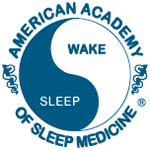 The Pew Research Center has been studying American teens and twenty-somethings. This week it released a new report: “Millennials: A Portrait of Generation Next.”
The Pew Research Center has been studying American teens and twenty-somethings. This week it released a new report: “Millennials: A Portrait of Generation Next.”The report is based on a survey of 2,020 U.S. adults. It included an oversample of 830 Millennials between the ages of 18 and 29 years.
It should come as no surprise that these young adults are surrounded by digital technology. The report calls them history’s first “always connected” generation.
“Steeped in digital technology and social media, they treat their multi-tasking hand-held gadgets almost like a body part,” stated the report.
The survey even asked: “Have you ever placed your cell phone on or right next to your bed while sleeping?” About 83 percent of Millennials reported sleeping next to their phones.
In January another report found that the percentage of students who owned a cell phone had increased from 39 percent to 66 percent. Is this technology affecting the sleep of Millennials?
Last year the Sleep Education Blog reported on recent studies. Research shows that frequent cell phone use may cause a number of sleep problems.




















